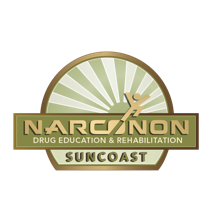Illicit Drug Use in America, By the Numbers

Despite being one of the most developed countries on earth, and possibly because of it, America has not yet figured out how to handle its illicit drug use problems. Pills are sold in schools by children to children, and the federal government churns out $45 billion annually in funding for the prevention, enforcement, and treatment of teens and adults.
What is Addiction?
The Oxford Languages dictionary defines addiction as being:
“Physically and mentally dependent on a particular substance, and unable to stop taking it without incurring adverse effects.”
One factor of drug use, though not the only one, is the physical toll on the body. Drugs that create a “high” feeling do so by burning up the body’s nutrient and vitamin resources and introducing toxic and unnatural substances that alter the normal function of the cells. When the nutrients are all used up, it creates a depleted, empty, or “low” feeling. The vicious cycle of dependency begins when a person who has taken drugs believes that taking more of the same will make the bad after-affects go away.
What Makes a Drug Illegal?
The U.S. Drug Enforcement Agency (DEA) divides drugs and certain chemicals into five categories or “schedules.” They are divided based on the drugs’ addiction potential, or potential to create a dependency, as well as their assigned medicinal value. Schedule I drugs are the most potent, and Schedule V is the least likely to cause harm. The penalties for illegal use are more severe the higher the schedule of the drug. The federal and state definitions sometimes differ; we will cover the state level, as defined in Florida Statute §893.09.
Schedule I Drugs
A substance in Schedule I has a high potential for abuse and has no currently accepted medical use. They lack safety even if administered under medical supervision. Examples of substances listed in Florida law include:
- Marijuana and THC (tetrahydrocannabinol): Contrary to marijuana dispensary marketing, marijuana and THC use has long been considered addictive and unsafe.
- Hallucinogens: LSD, MDMA (also called Molly or ecstasy), and psilocybins (magic mushrooms) fall in this category.
- Synthetics: These include man-made cannabinoids such as Spice, K2, and bath salts.
Schedule II Drugs
Schedule II drugs have a high abuse potential, but have some accepted medical uses under strict restrictions or medical supervision.
- Opioids: Morphine, oxycodone, fentanyl, and methadone. Fentanyl can be fatal in very small doses, but when applied in microdoses under medical supervision, it can relieve severe pain during and after surgery.
- Stimulants: Cocaine and amphetamines (such as Adderall) fall in this category. Cocaine and “Crack” cocaine have become so abused and notorious that its use as a topical numbing agent in medical procedures is often forgotten.
- Sedatives: Prescription and medical-grade sedatives, such as pentobarbital, are included in this grouping.
Schedule III Drugs
Less dangerous than Schedule I and II, Schedule III drugs still have a moderate potential to create dependency while also having accepted medical uses.
- Steroids: Man-made versions of hormones, such as testosterone, can be used to help some conditions but can be abused.
- Opioid combinations: Less potent, but still containing amounts of opioids, such as brand name ultra-strength cough syrups and liquid painkillers.
- Ketamine: Often abused and potentially dangerous in the right amounts, Ketamine has medical uses as a painkiller and tranquilizer.
Schedule IV Drugs
Schedule IV drugs are regularly used in the medical field and are considered “low risk.” Drug users still abuse these substances, however. They include:
- Benzodiazepines
- Sleeping pills
- High-strength pain relievers
- Muscle relaxants
Schedule V Drugs
These drugs are the most widely available, often over the counter, and considered relatively safe.
- Cough syrups containing little to no opioid derivatives
- Anti-diarrhea medications
- Pain relievers
Top Abused Illicit Drugs in America
Marijuana was the most abused illicit drug in America, with over 61.8 million users in 2023, the most recent year on record. Its use outstrips all other illegal drug use combined. Multiple factors contribute to this number, one of which is marijuana’s wide availability, despite being labeled as a Schedule I drug at the state and federal levels.
There is also the undeniable factor that drug companies may not wish to accept and for which marijuana is labeled a Schedule I drug: It is addictive. It creates a physical and mental dependency for those who use it.

Other top abused illicit drugs after marijuana include, in order of abuse:
- Hallucinogens
- Prescription Pain Relievers
- Cocaine
- Prescription Sedatives
- Prescription Stimulants
Heroin came in last on the list, at 660,000 users, the only drug listed with under a million people using it illegally.
Why Do People Take Drugs?
People take drugs for a wide range of reasons. But most of them come down to wanting to escape. Whether it is escaping boredom, loneliness, or life’s problems, drugs only serve to mask the situation and often make it worse.
Narconon: Handling the Root of Addiction
Narconon is a unique rehabilitation program that doesn’t just seek to end the abuse of illicit or legal substances but helps them find out why they started in the first place. Handling the root cause of their problems by teaching life skills makes it possible for them to do well long after they complete the program. If you or a loved one is struggling with addiction, help is possible. Contact a Narconon representative today to find out more.
Reference Links:
1. https://www.statista.com/statistics/618857/total-federal-drug-control-spending-in-us/
4. https://www.narconon-suncoast.org/drug-rehab/
